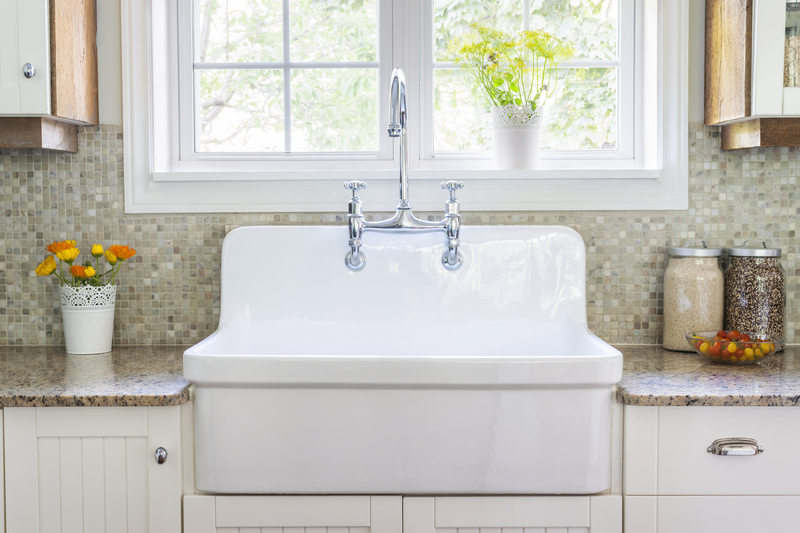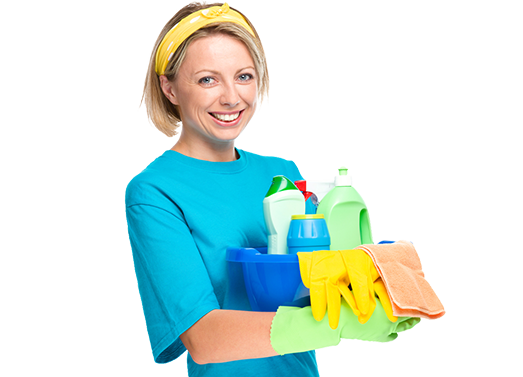Keeping Your Home Fresh: Strategies for Dust and Allergen Control
Posted on 30/08/2025
Keeping Your Home Fresh: Effective Strategies for Dust and Allergen Control
Maintaining a clean and inviting living environment goes beyond simple aesthetics--it is essential for your health and well-being. Dust, pollen, pet dander, and other allergens can accumulate quickly, impacting the indoor air quality of your home. Whether you suffer from allergies, asthma, or simply want to breathe cleaner air, effective dust and allergen control should be at the top of your priority list.
In this comprehensive guide, we will explore practical methods to minimize dust and reduce household allergens, ensuring your home remains a fresh and healthy sanctuary for your loved ones.

Understanding the Sources of Dust and Allergens
Before diving into cleaning routines and prevention methods, it's vital to understand where dust and allergens come from. Household dust is a mixture of tiny particles including dead skin cells, fabric fibers, soil, pollen, mold spores, and microscopic life forms such as dust mites. According to the Environmental Protection Agency (EPA), indoor air pollution, primarily from dust and allergens, can often be more significant than outdoor pollution.
- Textiles like carpets, upholstery, drapes, and bedding collect and store dust and allergens.
- Pets shed dander and fur, both of which contribute to allergen levels.
- Open windows and doors allow pollen and outdoor pollutants to enter.
- Humid environments support the growth of mold and dust mites.
Understanding these sources is the first step to keeping your home fresh and minimizing exposure to common irritants.
Developing a Dust and Allergen Control Plan
A multi-faceted approach is important for achieving lasting results. Let's break down the most effective strategies for dust reduction and allergen control in your living space.
1. Implement a Rigorous Cleaning Schedule
- Dust Regularly: Use a damp microfiber cloth instead of feather dusters, which simply disperse dust into the air. Aim to wipe down surfaces at least once a week.
- Vacuum Frequently: Invest in a high-quality vacuum cleaner equipped with a HEPA filter. Vacuum carpets, rugs, and upholstery two to three times a week, focusing on high-traffic areas.
- Mop Hard Floors: Hard surfaces like wood, tiles, and laminate benefit from damp mopping. This removes any residual dust that vacuuming may miss.
Pro tip: Don't forget hidden areas: clean under beds, behind furniture, and along baseboards where dust tends to gather.
2. Optimize Air Filtration and Ventilation
One of the best ways to control indoor allergens is by maintaining good air quality throughout your home.
- Use HEPA Filters in Your HVAC System: High-Efficiency Particulate Air (HEPA) filters can trap airborne particles such as pollen, pet dander, and dust mites. Change filters every three months or as recommended.
- Consider an Air Purifier: A portable air purifier with a HEPA filter can be especially helpful in bedrooms and living areas.
- Keep Windows Closed During High Pollen Seasons: Limit the influx of outdoor allergens by keeping doors and windows shut, especially in the spring and fall.
- Ventilate When Appropriate: On low pollen days, refresh your home by opening windows for a short period to exchange stale indoor air with fresh outdoor air.
3. Control Humidity Levels
Too much moisture in the air provides an ideal environment for dust mites and mold, both leading culprits of indoor allergies.
- Use a Dehumidifier: Aim to keep indoor humidity below 50%. Dehumidifiers are particularly useful in basements and bathrooms.
- Run Exhaust Fans: Install and utilize fans in kitchens and bathrooms to expel excess moisture.
- Repair Leaks Promptly: Address leaking pipes or roofs to avoid water accumulation and mold growth.
4. Declutter and Minimize Dust Traps
The fewer objects you have on surfaces and floors, the less opportunity there is for dust to settle.
- Reduce Clutter: Store items away in closed containers, cabinets, or drawers.
- Limit Textiles: Washable slipcovers, minimalist decor, and hard-surface floors accumulate less dust.
- Swap Carpets for Hard Flooring: Carpets are dust magnets. Where possible, opt for hardwood, tile, or laminate.
5. Institute a No-Shoes Policy
Studies show that up to 85% of the dirt and chemicals in your home are tracked in on shoes. By asking family and visitors to remove their shoes at the door, you drastically reduce the introduction of new dust and allergens.
6. Keep Pets Clean and Well-Groomed
If you share your home with furry friends, pet dander can quickly accumulate and trigger symptoms for allergy sufferers.
- Bathe and Brush Regularly: Frequent grooming outside the home minimizes loose hairs and dander.
- Launder Pet Bedding: Wash bedding and toys weekly in hot water.
- Keep Pets Off Furniture: Designate pet-free zones in areas like bedrooms.
Bedroom-Focused Strategies for Allergen Control
Allergy control in the bedroom is crucial because this is where you spend a significant portion of your day. Bedrooms are prime environments for dust mites due to the abundance of bedding and upholstery.
Bedding Choices and Laundry Habits
- Use Allergen-Proof Covers: Seal mattresses and pillows in dust mite-proof covers.
- Wash Linens Weekly: Launder sheets, pillowcases, and blankets in hot water (130?F or higher) to kill dust mites.
- Replace Pillows Regularly: Fluffy pillows may harbor dust mites. Swap them every 1-2 years.
Avoid Upholstered Headboards and Stuffed Toys
Fabric headboards and plush toys collect dust. Opt for wood or metal frames, and restrict the number of stuffed animals in children's rooms.
Kitchen and Bathroom Allergen Management
These rooms may not seem like dust magnets, but neglected corners and crevices can harbor mold, mildew, and other allergens.
Tips for a Cleaner Kitchen
- Wipe Down Surfaces Daily: Use a damp cloth to clean countertops, cabinet faces, and shelves.
- Control Food Debris: Regularly sweep and mop floors to minimize crumbs that can attract pests and contribute to dust.
- Check for Leaks: Moisture under sinks or behind appliances encourages mold growth.
Bathroom Mold Prevention
- Use a Squeegee: Wipe down shower walls and glass doors after every use to limit mold and soap scum buildup.
- Wash Bath Mats Weekly: Don't forget shower curtains--use machine-washable liners if possible.
- Inspect for Grout Mold: Keep tile and grout clean and dry. Consider resealing grout to prevent mold penetration.
Advanced Allergen Reduction Measures
For homes with severe allergies or individuals with asthma, extra precautions can make a significant difference.
- Install Central Vacuum Systems: These expel dust outside rather than recirculating it indoors.
- Consider UV Air Purifiers: Ultraviolet light can kill bacteria, viruses, and mold spores as part of your HVAC system.
Professional cleaning services are available if you need deep cleaning or suspect mold infestations beyond routine maintenance.
Natural and Non-Toxic Cleaning Solutions
Many commercial cleaners contain harsh chemicals that can trigger allergic reactions. Instead, try these natural and non-toxic options:
- White Vinegar: Effective against mold and bacteria.
- Baking Soda: Deodorizes carpets and absorbs moisture.
- Lemon: Freshens air and cleans surfaces with a pleasant scent.
- Essential Oils: Lavender and eucalyptus oils can be added to homemade cleaners for extra antimicrobial power.
Always test natural solutions on a small, inconspicuous area first to prevent damage to delicate surfaces.
The Importance of Regular Maintenance
Consistency is key when it comes to managing dust and household allergens. Create and follow a cleaning calendar to ensure each area of the home gets routine attention.
- Weekly: Dust, vacuum, mop, and launder bedding.
- Monthly: Wash curtains, wipe ceiling fans, and deep clean major appliances.
- Seasonally: Declutter rooms, clean behind appliances, and swap the air filters.

Additional Tips for Keeping Your Home Allergy-Free
- Store Books and Papers: In closed cabinets to prevent dust buildup.
- Choose Easy-to-Clean Decorations: Glass, metal, or sealed wood are preferable to fabrics.
- Keep Windowsills and Blinds Clean: Dust and allergens tend to collect here. Use a damp microfiber cloth.
- Control Indoor Plants: Some plants (like ferns and ficus) can attract mold or harbor dust. Choose hypoallergenic varieties like snake plants or peace lilies, and keep soil dry.
Conclusion: Breathe Easier with a Fresh, Allergen-Free Home
Maintaining a fresh environment free from dust and allergens is not a one-time task; it requires ongoing vigilance and smart strategies. By implementing regular cleaning routines, optimizing air quality, controlling humidity, minimizing dust traps, and making smart choices about home decor and maintenance, you help significantly reduce exposure to dust and indoor allergens.
Adopt these best practices, and you'll not only enjoy a cleaner home--your family will breathe easier, sleep better, and live healthier. For those with allergies or asthma, these proactive steps can make a dramatic difference in quality of life.
For more advice on indoor air quality and keeping your home dust-free and allergen-safe, consider consulting allergists or indoor air quality specialists. Your home should be your haven--make fresh, clean air a top priority!



